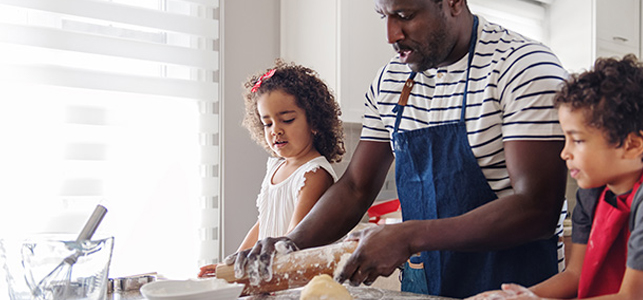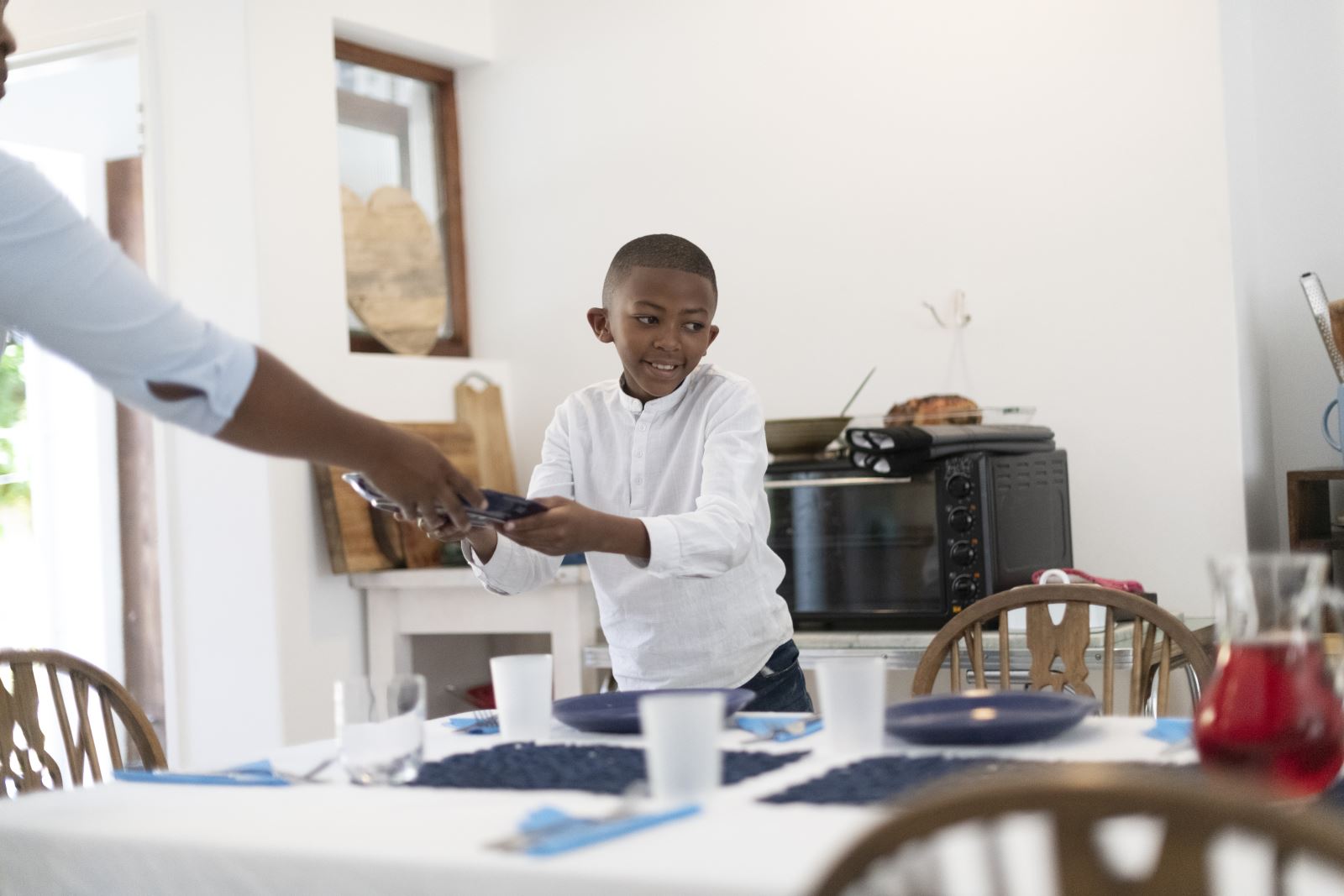Children's Emergency Department is now located in Children's Tower: 1001 E. Marshall Street.
Learn more
Nothing marks the holiday season quite like delicious food and favorite family recipes. As we head into prime time for cooking and baking, it can be a great opportunity to get kids involved in the kitchen in age-appropriate ways.
“Traditionally, the holidays involve a lot of excitement and commotion in the kitchen as families prepare for big meals and celebrations, which can also mean distractions and avoidable injuries,” says Corri Miller-Hobbs, registered nurse and Safe Kids Virginia program coordinator. “Though things may look a little different this year due to COVID-19, it’s still a good time to take a moment and review cooking safety practices with everyone in your home – adults and kids alike.”
As a Level 1 pediatric trauma center, we have unfortunately seen many cooking-related injuries, including the preventable injuries below.
Curious little ones may grab a dangling cord and pull a mixer, blender or other appliance down on top of them. Adults could trip and fall or pull the appliance onto their feet. Avoid these accidents by coiling the cords and placing them up on the counter. Keep knives out of reach too!
As with cords, young kids may be able to reach the front burners or pot handles and inadvertently touch or pull them down. Use the rear burners when possible and always turn handles away from the edge of the stove. Same goes for counters – keep hot foods to the back (or middle for an island) and turn handles inward.
It’s always a good idea to have a kid-free zone of three feet around the stove, but especially so when the kitchen is extra busy.
Splashes, splatters and other mishaps can cause burns if you’re holding a child and multi-tasking at the stove. Ask another family member to keep them entertained, or place them in a secure spot such as a high chair while you cook.
It’s recommended to test your smoke alarms and replace the batteries at each time change, but if it slipped your mind now is a great time too! Make sure they’re in good working order.
Long or loose-fitting sleeves can get caught or catch fire in the kitchen, especially when you have so many other things to think about. Eliminate this concern by wearing short or tight-fitting sleeves, or roll sleeves up when cooking.
If you have a small cooking fire on the stove, cover the pan and turn off the burner. Leave the cover on until the pan has cooled completely. If a fire occurs in the oven, turn it off and keep the door closed. Always keep a fire extinguisher in the kitchen just in case. If you aren’t sure whether or not you can put out the fire, leave the house and call 9-1-1.
Remain in the house when food is cooking and check on it frequently, especially when baking, roasting or simmering. It may be helpful to set a timer so you don’t forget. It’s also important to stay close when using a grill, smoker or fryer outdoors.
Steam and spills can be dangerous when removing food from the microwave, especially if it’s overhead. This is definitely a grown-up job that should be done carefully.
Kids can still pitch in. Here’s how.
Most kids love to help and there are plenty of things they CAN do to pitch in and be part of the process. Here are some jobs that can be safe and fun at various ages. You know your child and can best decide what is most appropriate for them at each age.
 Kids aged 3-5 can:
Kids aged 3-5 can:
Kids aged 6-8 can:
Kids aged 9-12 can:
In the teen years, most adolescents can use the microwave, stove or oven without an adult present, but it never hurts to review safety tips including using oven mitts, remembering to turn the stove or oven off, and staying focused and in the kitchen when food is cooking.